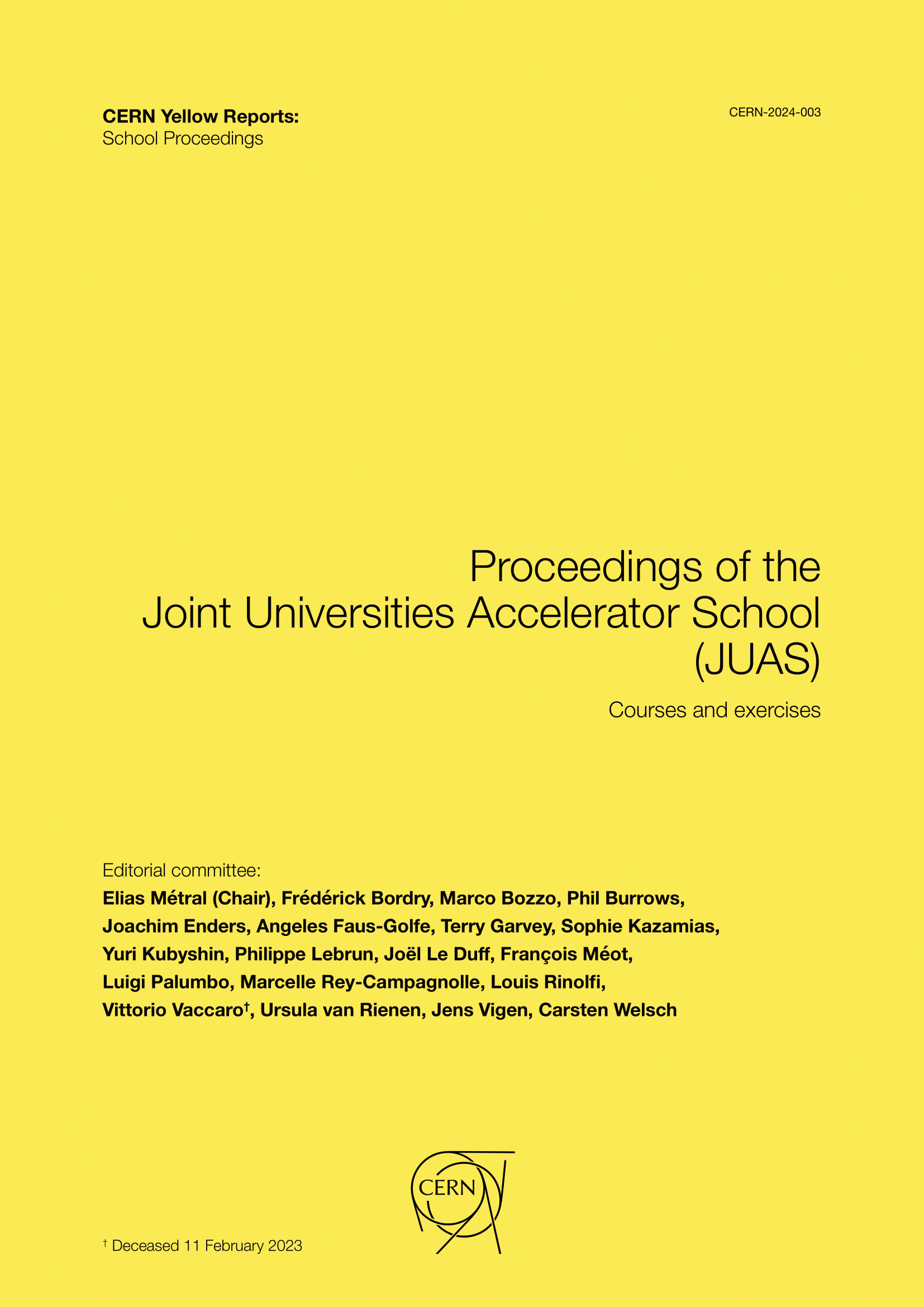Part III—A century of particle accelerators—JUAS seminars
DOI:
https://doi.org/10.23730/CYRSP-2024-003.1869Abstract
Part III features the seminars given to illustrate the courses. What purposes do the accelerators serve? How did the technology develop? What are the links between the different fields in which accelerators are used? Insights into practical applications improve the integration of the courses. The ongoing demand from fundamental research and societal applications is now evolving within the framework of sustainability, leading to the introduction of new technologies that shift from “incremental innovation” to “disruptive innovation”. The evolution of the CERN accelerator complex over 70 years is a good example of the remarkable development of the discipline. In the 16 chapters, many colliders are reviewed; these machines allow high energies to be reached, seeking to produce new particles. Some of these are already in operation, while others are under construction or still at the research stage. Other recent facilities include X-ray free-electron lasers (FELs), energy-recovery linacs (ERLs), and accelerator-driven systems (ADSs), which are being considered for the transmutation of long-lived nuclear waste. Machine learning, as a mathematical tool, is investigated for its potential to improve accelerator operation. One chapter illustrates the design of beamlines derived from the main CERN accelerators (PSB, PS, and SPS) for fixed-target experiments. Radiation oncology (biology, physics, and clinical applications) is introduced by a hospital doctor, focusing on historical developments and future perspectives; vast improvements in
curability and reduced toxicity have already been obtained.
Published
Issue
Section
License

This work is licensed under a Creative Commons Attribution 4.0 International License.
Authors who publish with this publication agree to the following terms:
- CERN retains copyright and publishes the work licensed under the Creative Commons Attribution License 4.0 that allows others to share the work with an acknowledgement of the work's authorship and initial publication in this series.
- Authors are able to enter into separate, additional contractual arrangements for distribution of the published version of the work (e.g., post it to an institutional repository or publish it in a book), with an acknowledgement of its initial publication in this series.
- Authors are permitted and encouraged to post their work online (e.g., in institutional repositories or on their website) prior to and during the submission process, as it can lead to productive exchanges, as well as earlier and greater citation of published work (See The Effect of Open Access).

